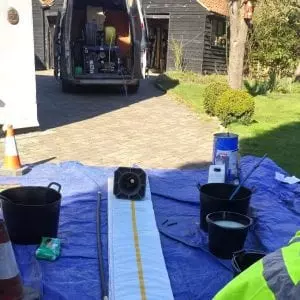 Add My Company
Add My Company
Sign In
Are Cured in Place Pipe Liners Safe?
13-07-2023

Cured in place piping can be extremely dangerous task which does prove to be very useful as trenchless technology develops further. Testing of CIPP installations Is needed to confirm that materials comply with the site and engineering requirements as following procedure is critical to workers and their safety.what is CIPP?Industry insists that in-place plastic pipe liners are safe. Some scientists say that the process of installation is not. The rehabilitation tube is a rehabilitation method without a trench for the repair of existing tube systems. It is a seamless fitting of seamless tubes in an existing tube.
As one of the most employed recovery techniques, CIPP has uses in sewage, water, gas and industrial pipes with a width varying from 0.1 to 2.8 metres. The CIPP process requires insertion and execution of a felt line into a pre-existing pipe for repair. Resin is then exposed to a curing element in the liner to be placed on the inner walls of the pipe.Installation processA resin impregnated felt tube constructed of polyester, fibreglass cloth or other resin-impregnable material shall be placed or drawn through a broken thread. The entry point to the evacuation hole is usually carried out from upstream. The liner can be inserted upstream, but this is more likely. A liner from the downstream access point can be mounted upstream to a blind end; nevertheless, all CIPP deployment procedures are at highest risk.AdvantagesAs a trenchless system, CIPP does not need drilling to rehabilitate a pipeline that is either leaked or physically sound. Based on the construction criteria, drilling can take place, but the liner is often built through a manhole or other existing access point. To order to install something greater than 60 centimetres. In these situations, the liner is installed as it is damp on ground. The lateral connexions in the sewer lines also must be restored without digging through a remote-controlled device that draws a hole in the liner at the point of the lateral connection.DisadvantagesCIPP must also be carefully monitored for the release of chemical agents used in the downstream contamination reaction process of rehabilitated pipes. In typical sizes, the liner material is typically a nonwoven cloth that does not stretch well without and is broken in corners. The liners that are used in pipes with curves are made from a tissue, which enables them to curve with minimal rubbing.Contact UsIf you’re looking for a reliable drainage services, then Drain 247 is the company for you. Get in Touch with us for a fixed price quote, call us on 0800 612 8038 or alternatively fill out our contact form for a quote.
For more information on Are Cured in Place Pipe Liners Safe? talk to Drain 247
Enquire Now
More Blogs
List your company on FindTheNeedle.

